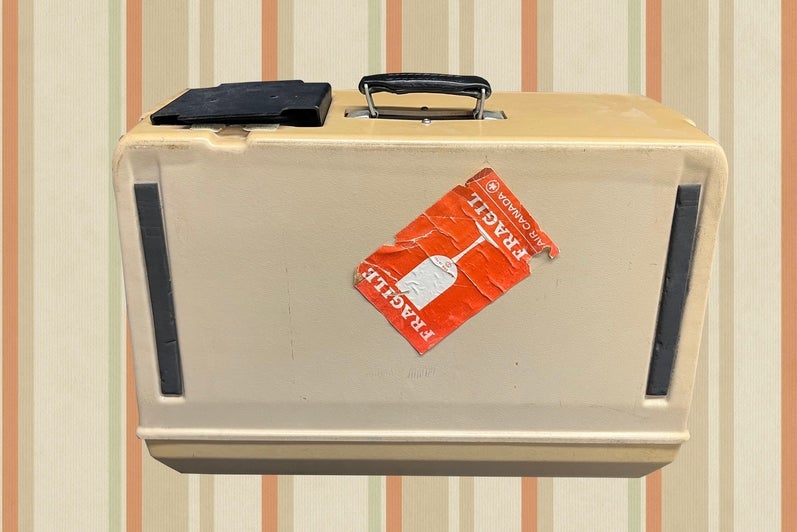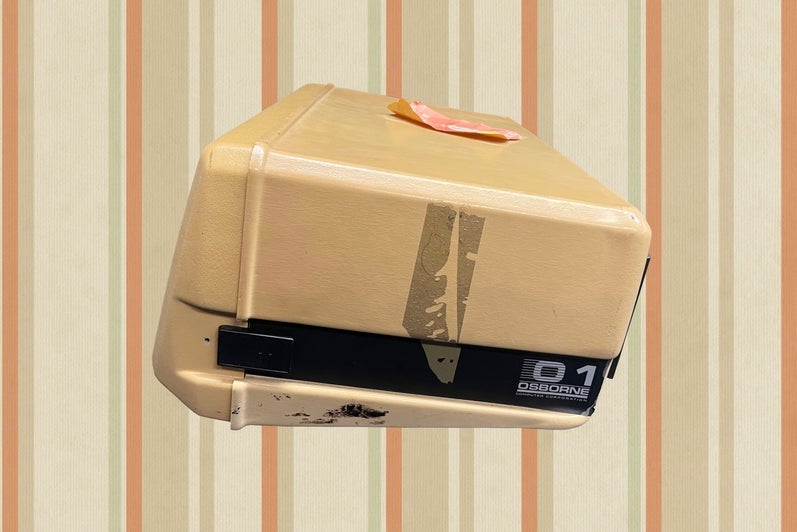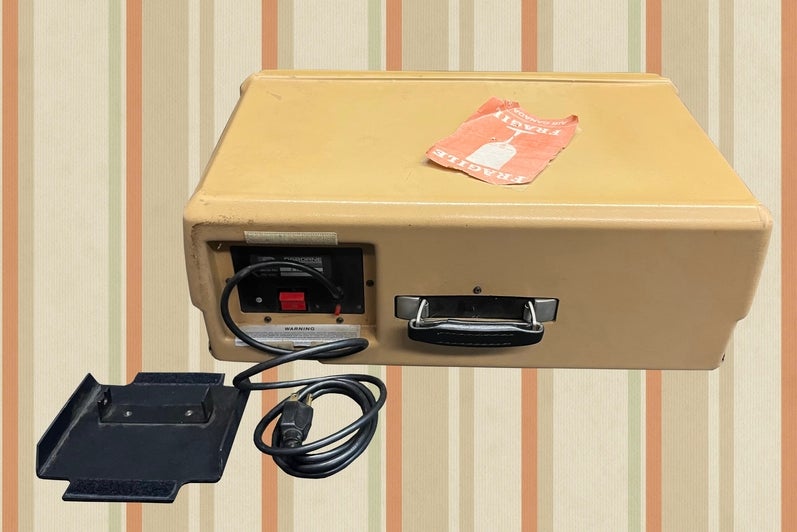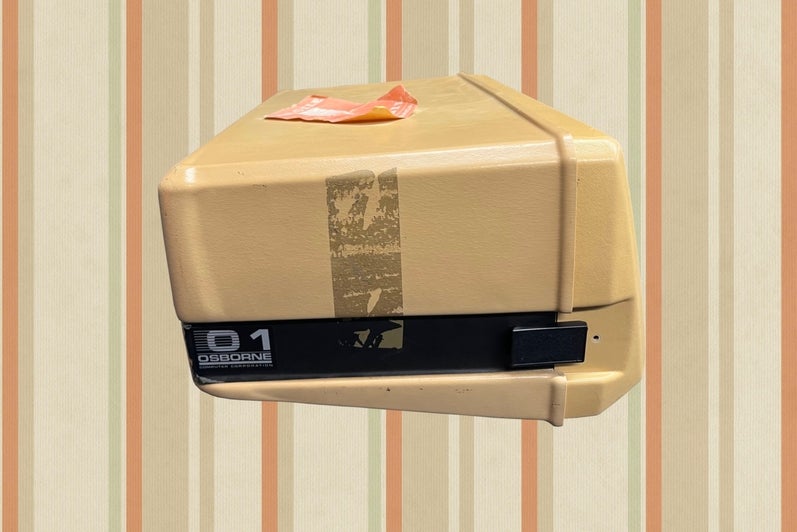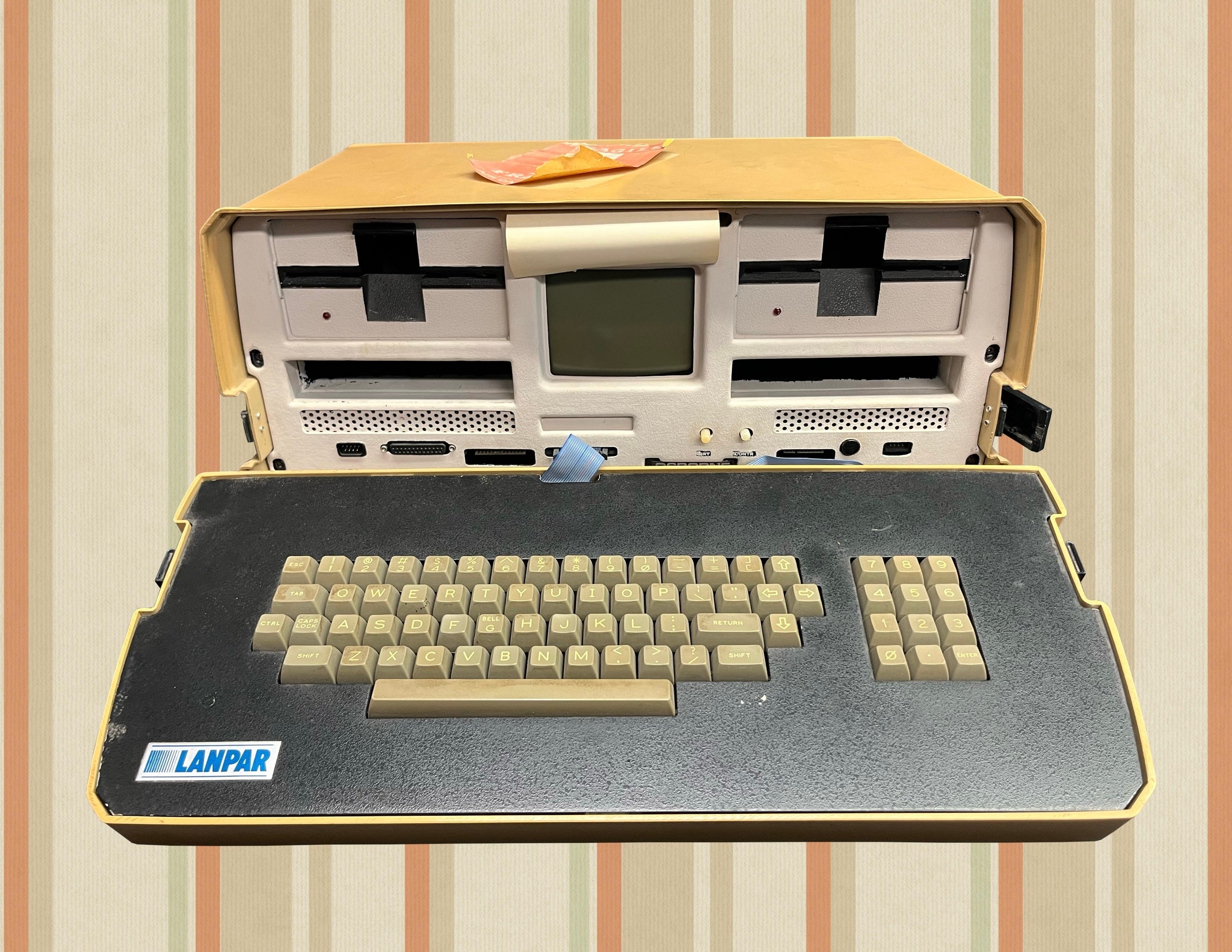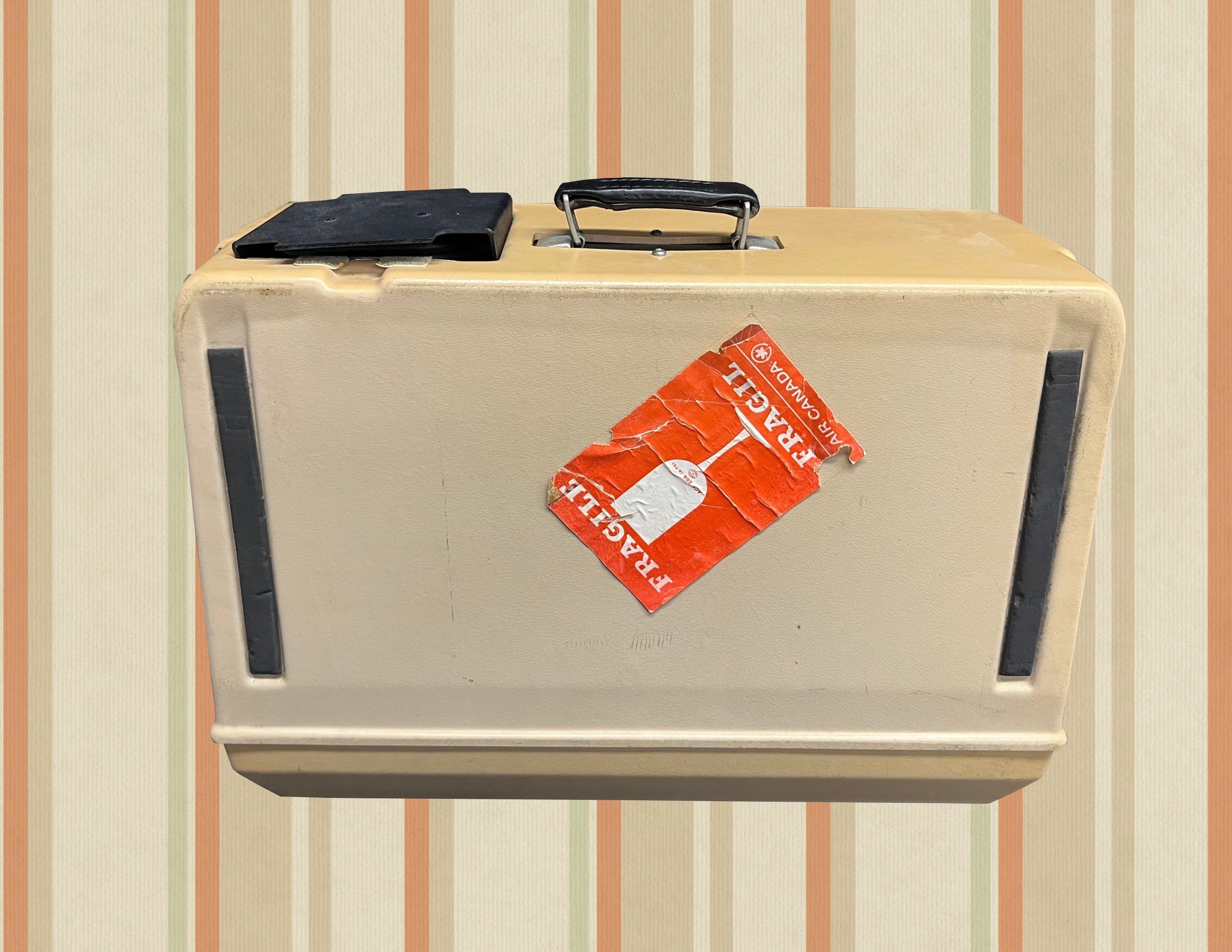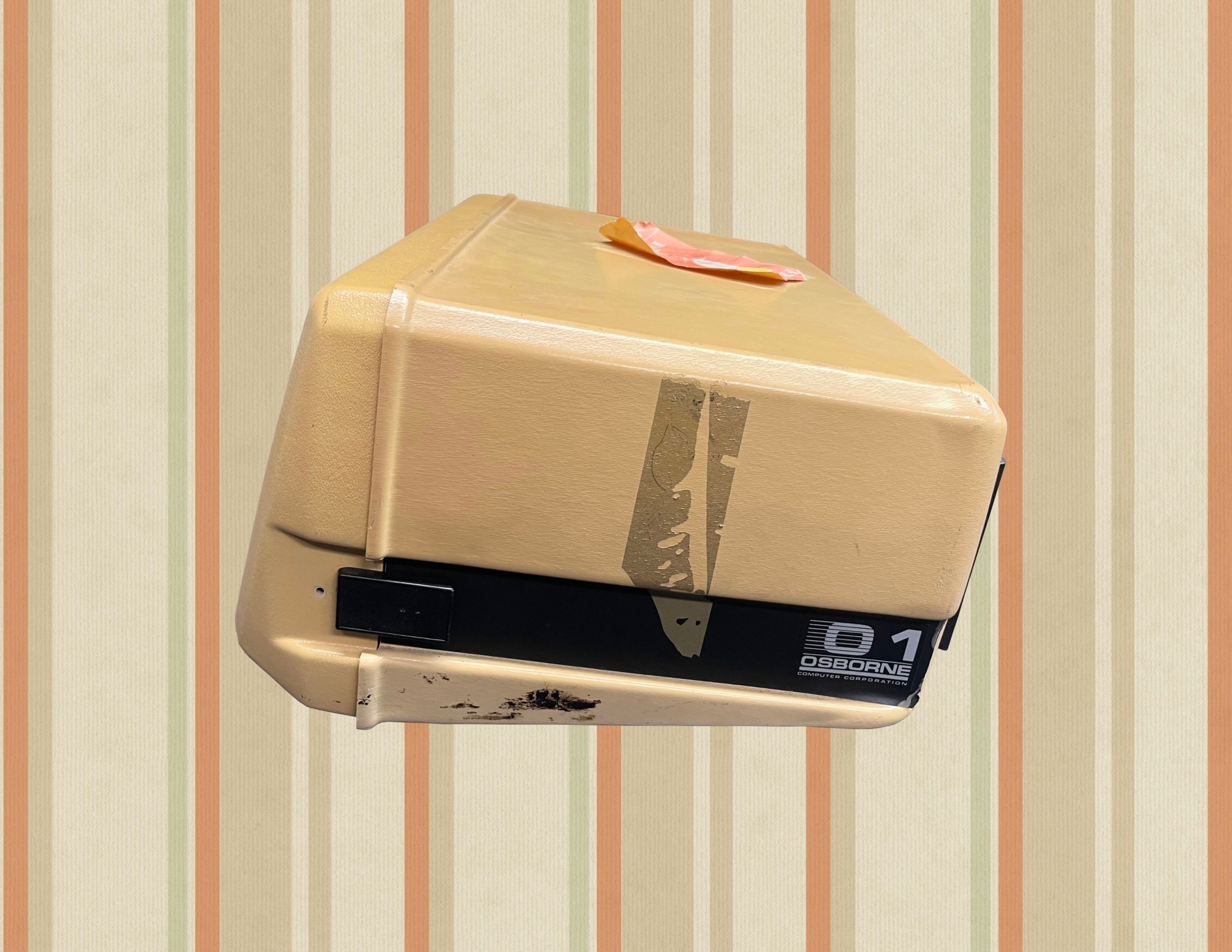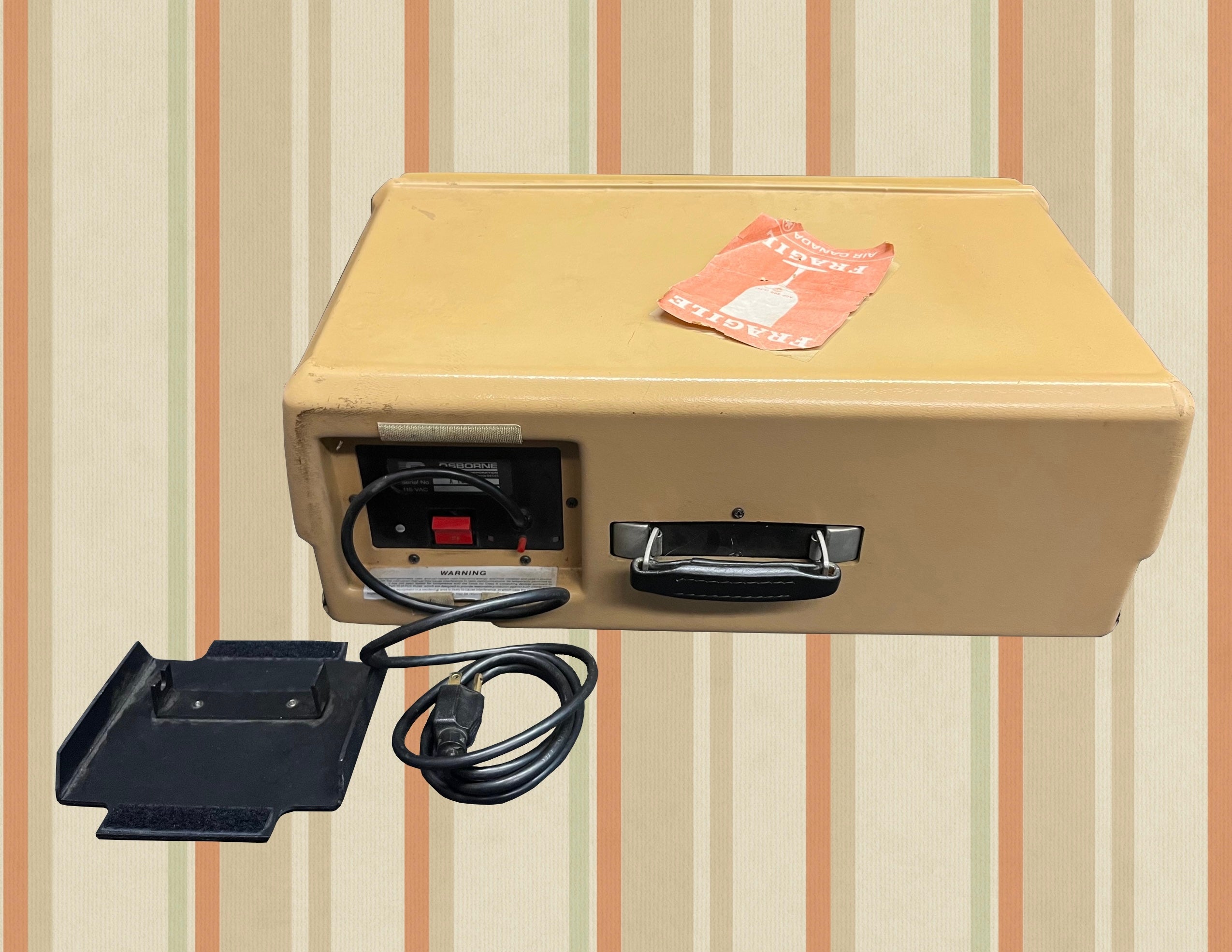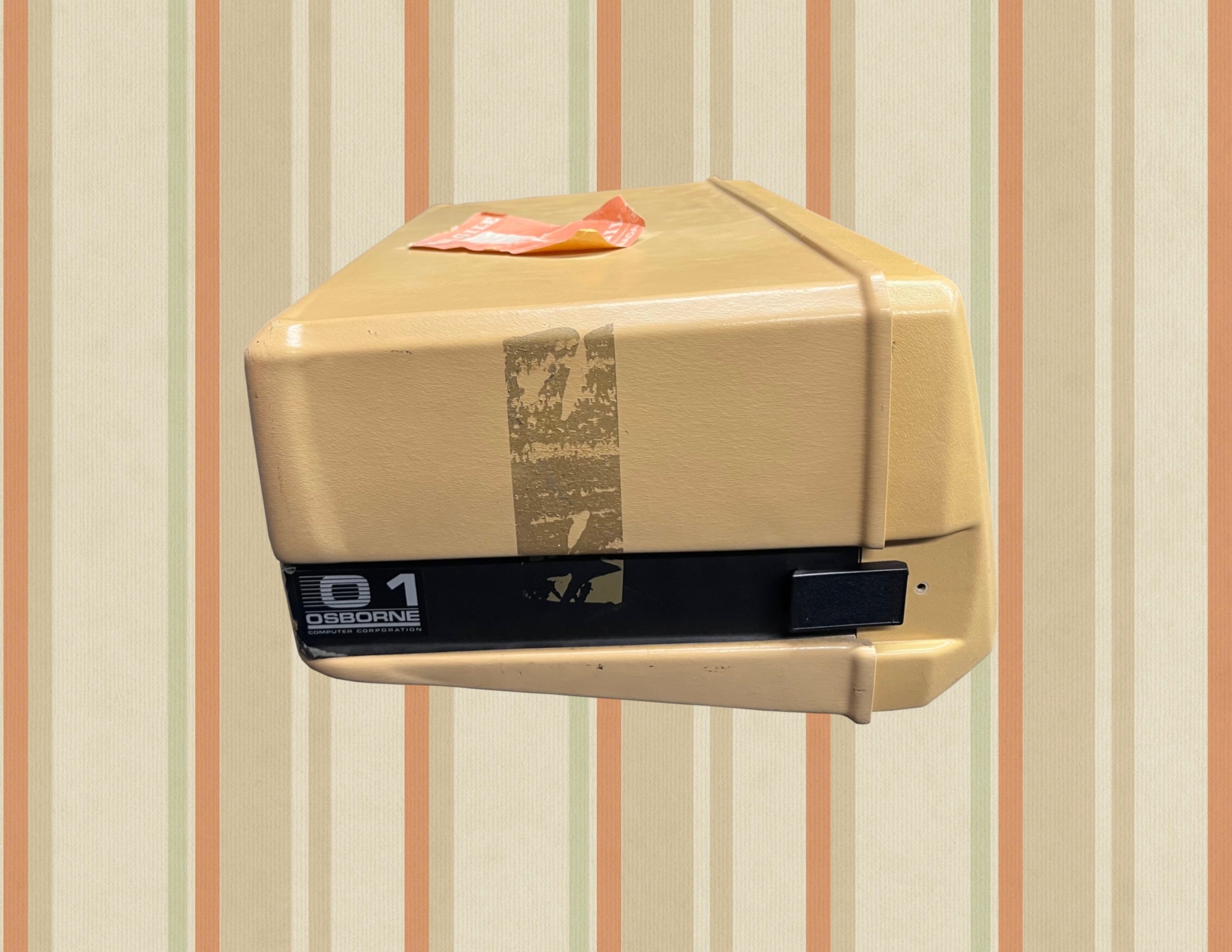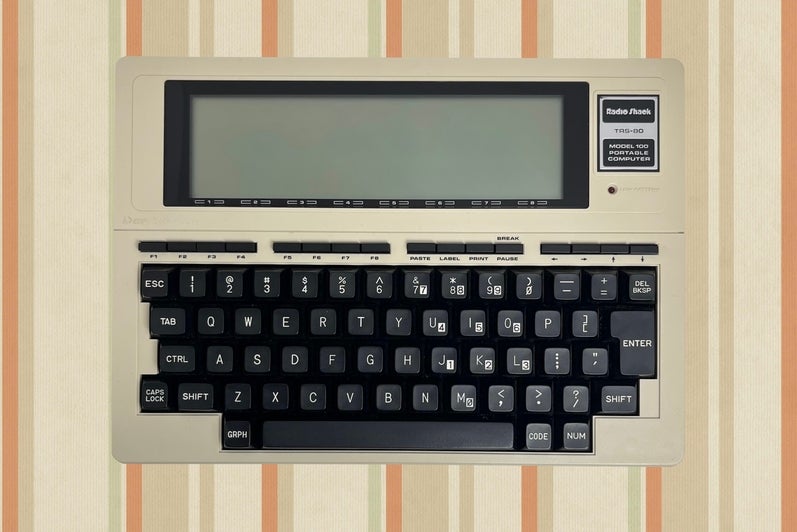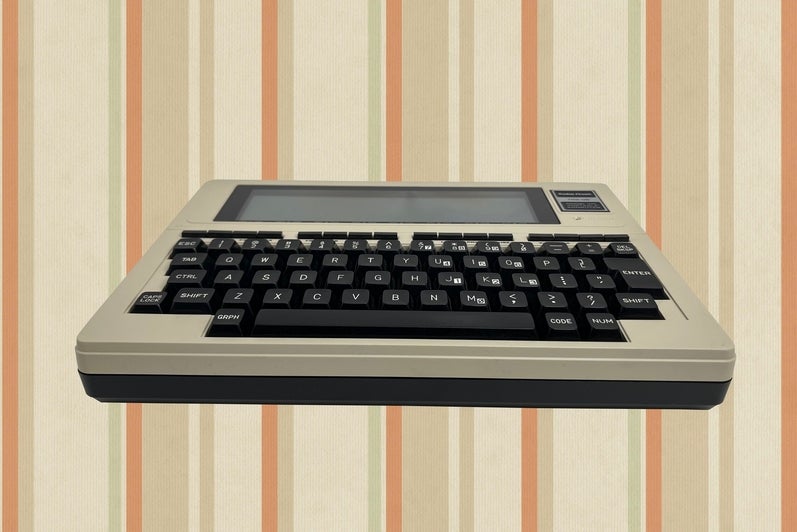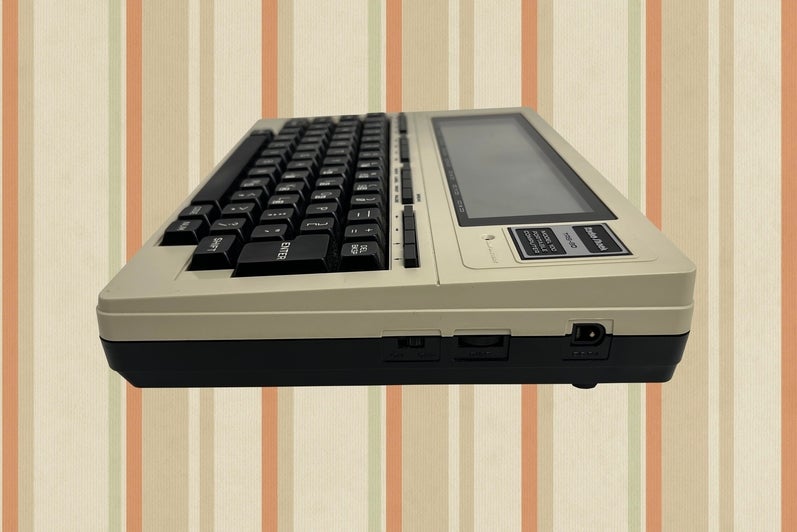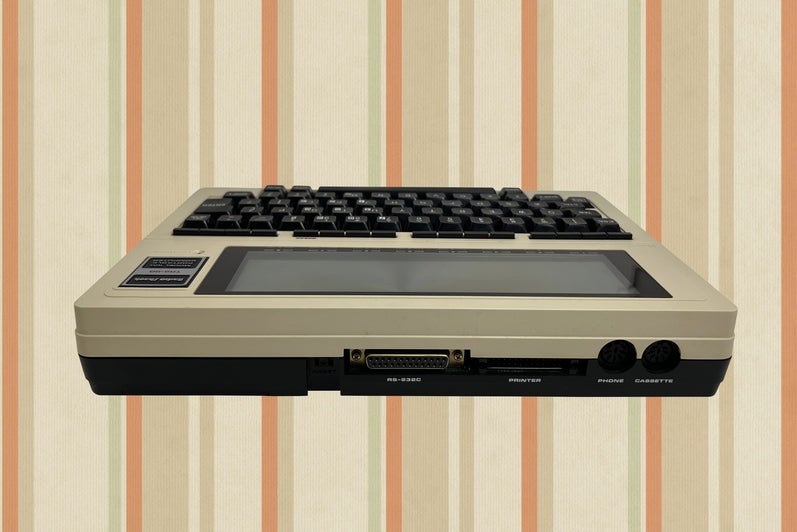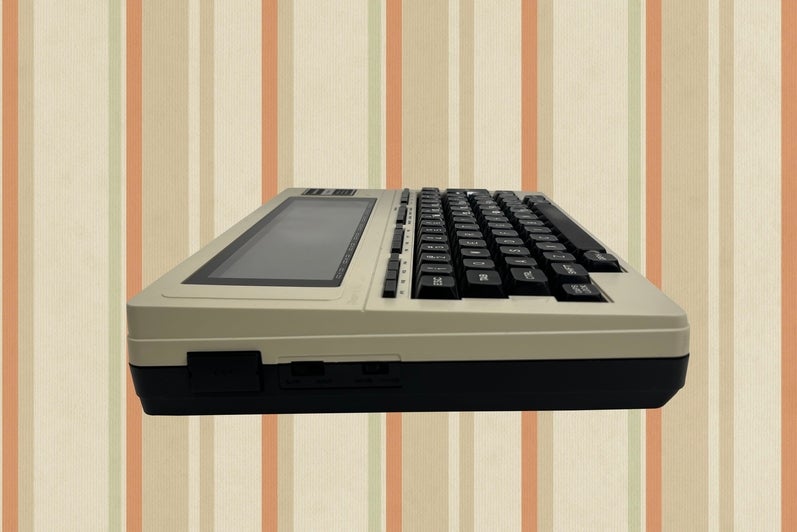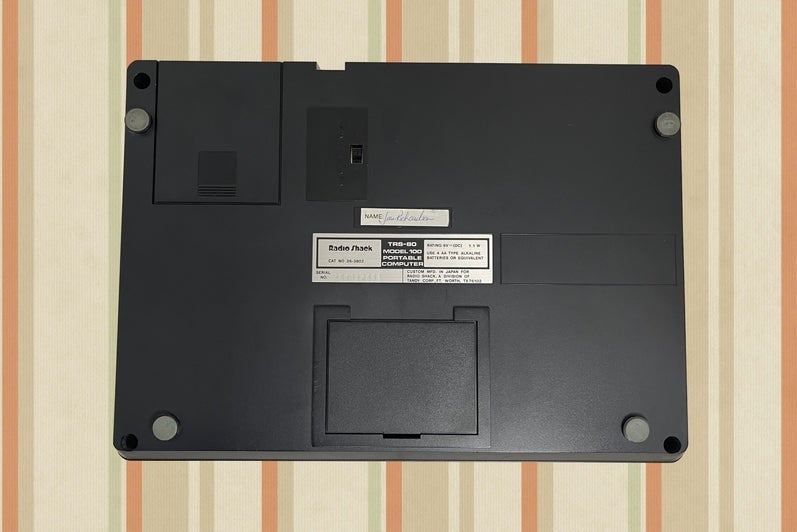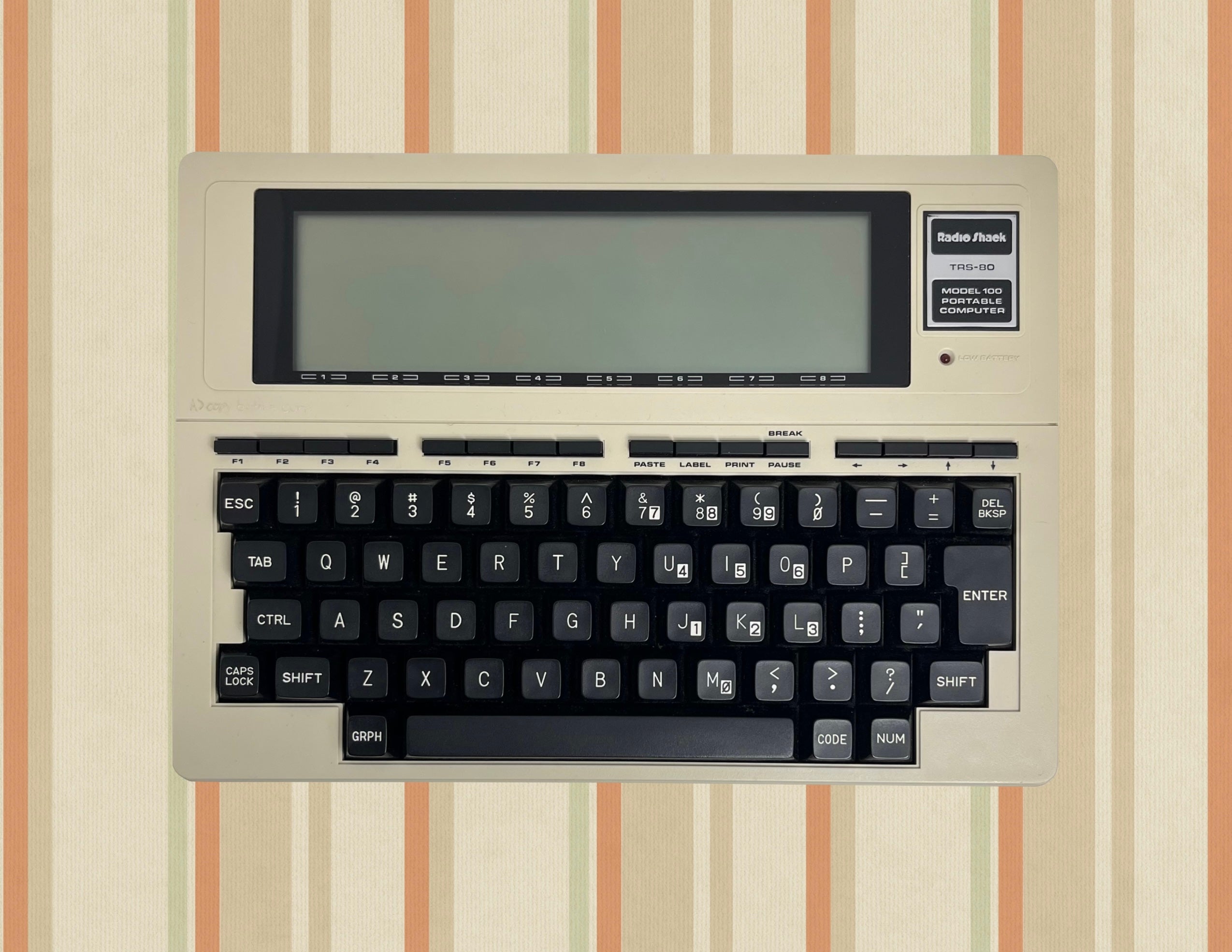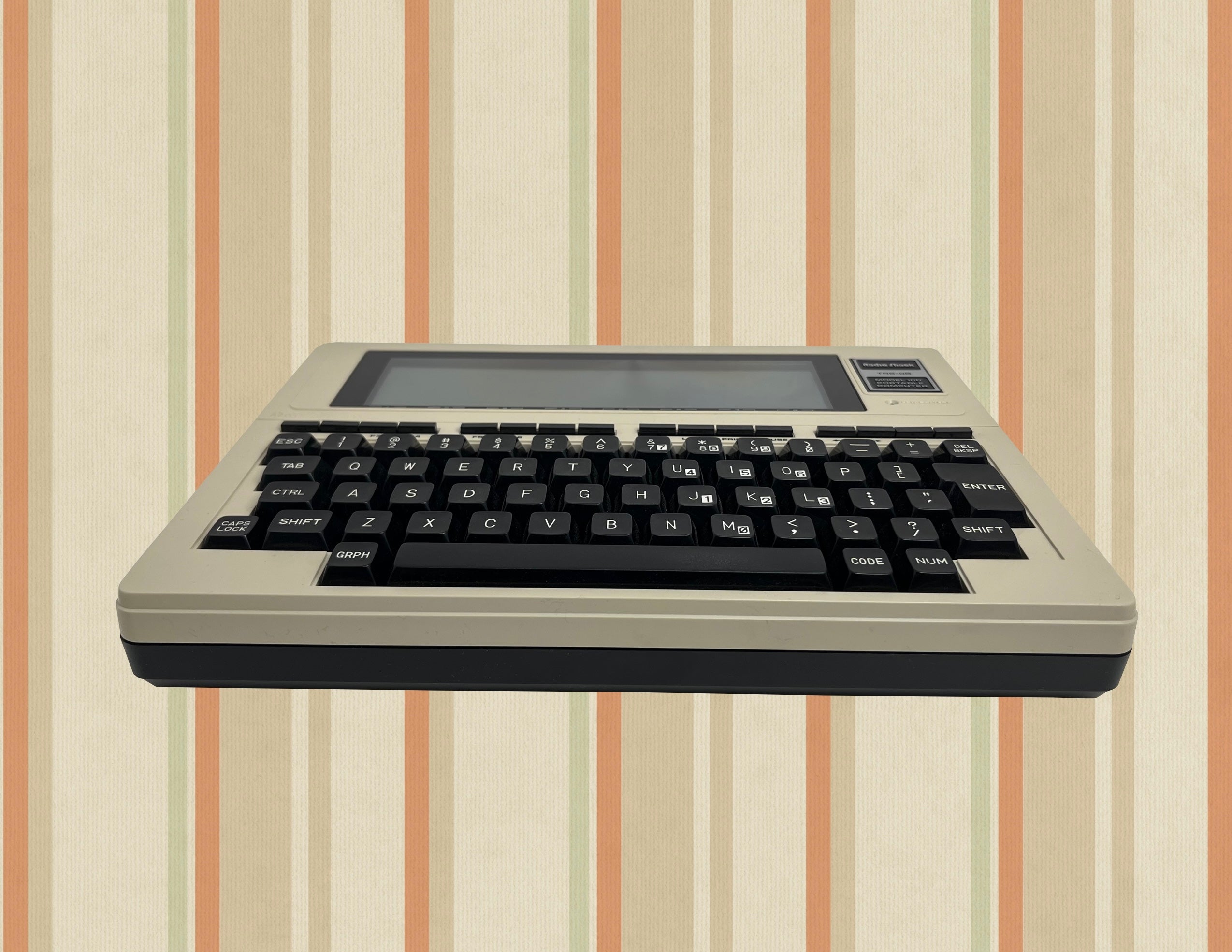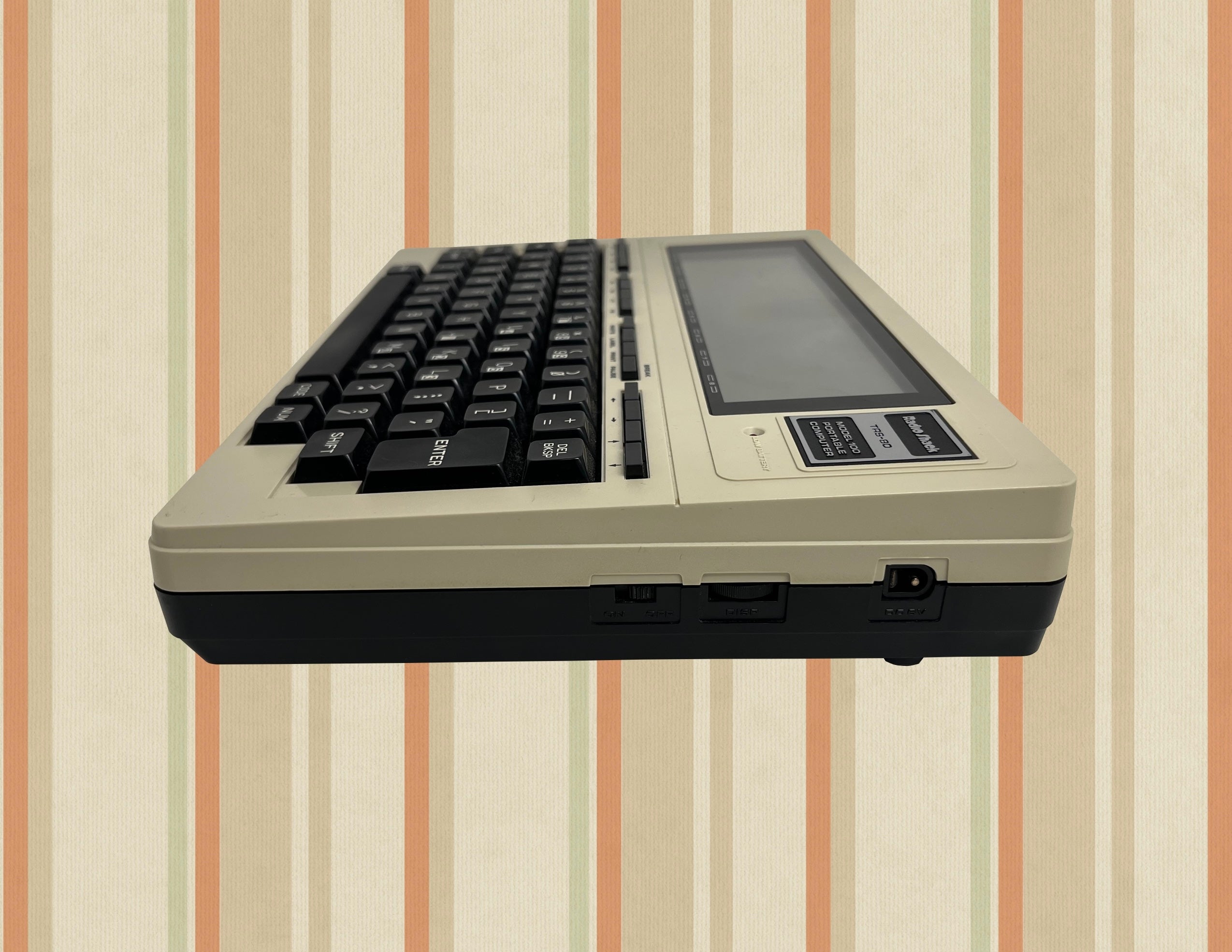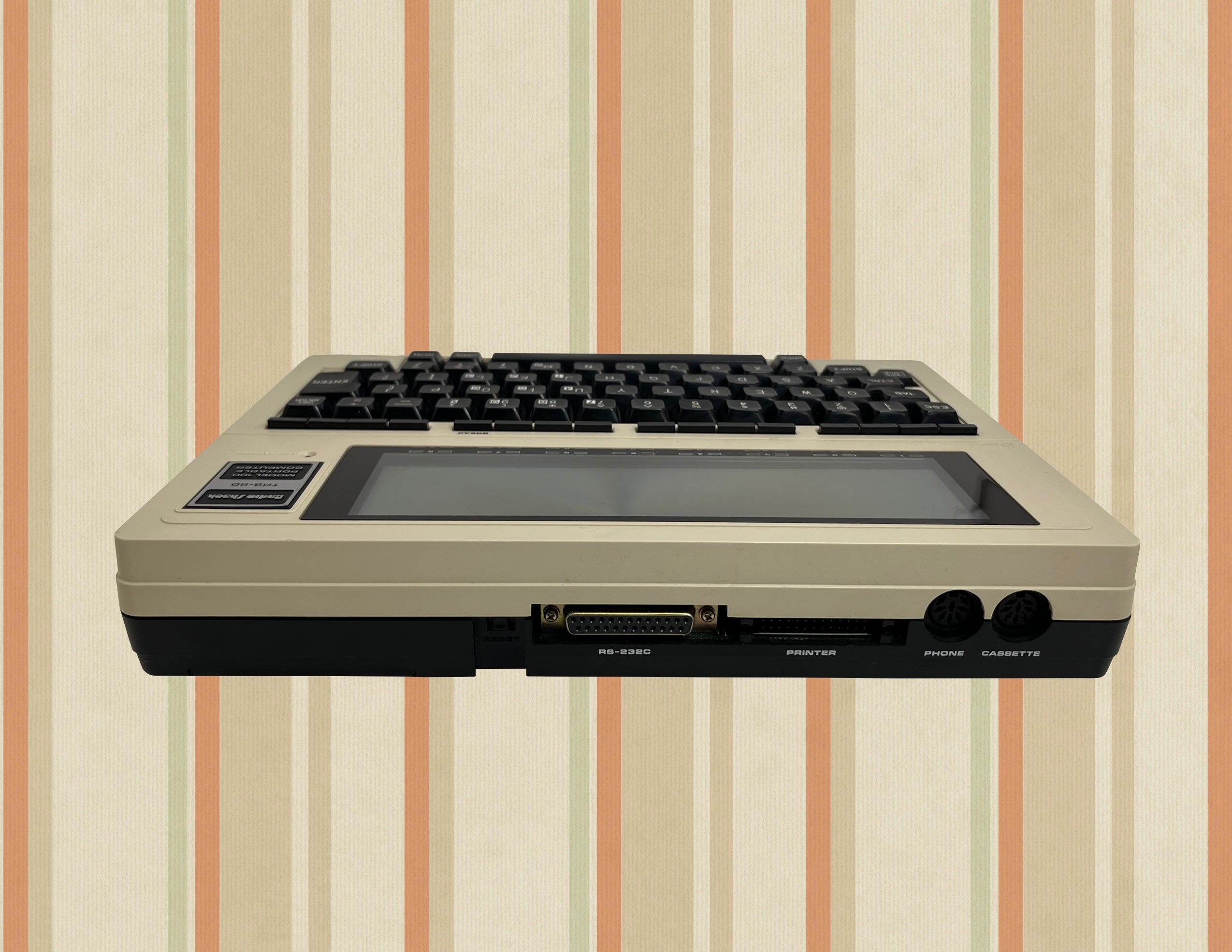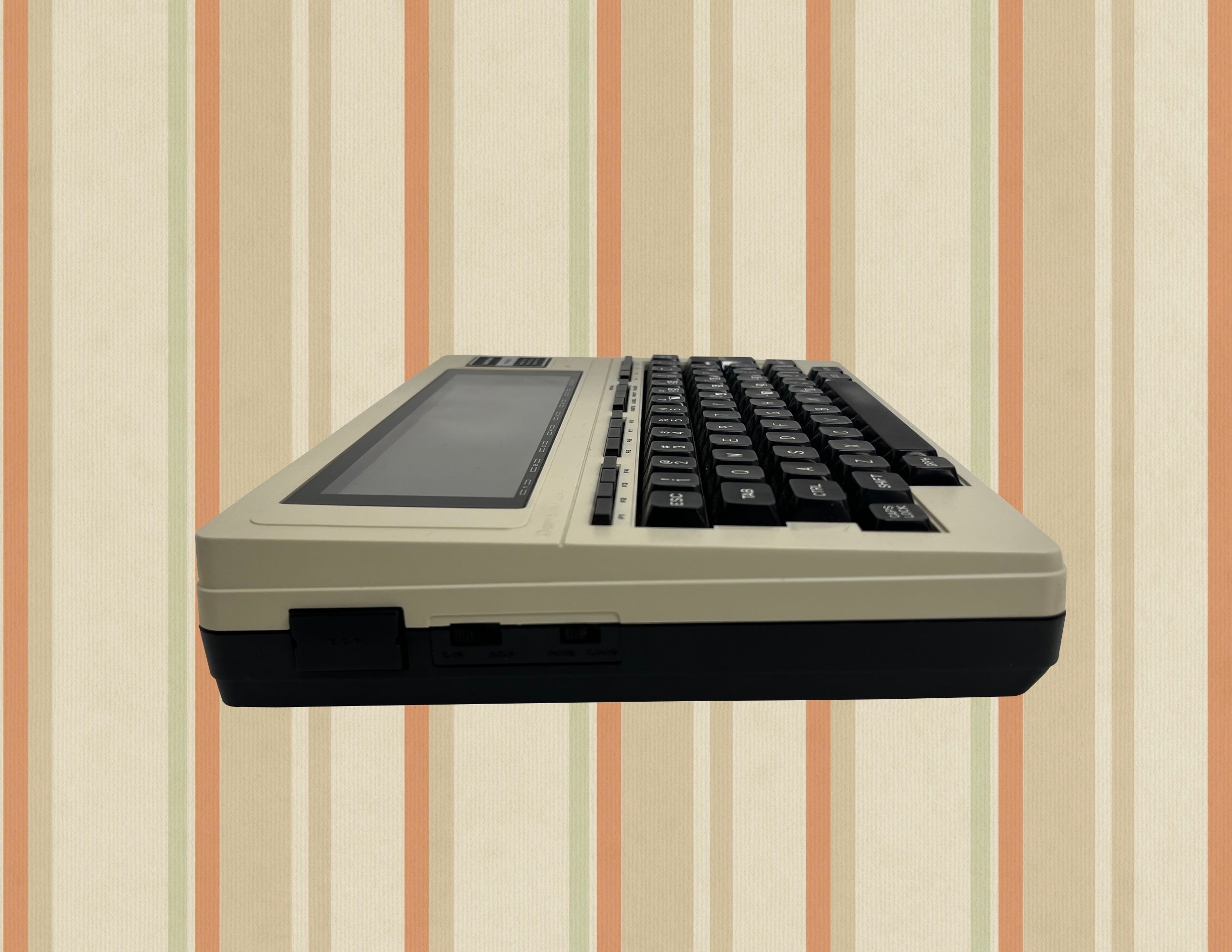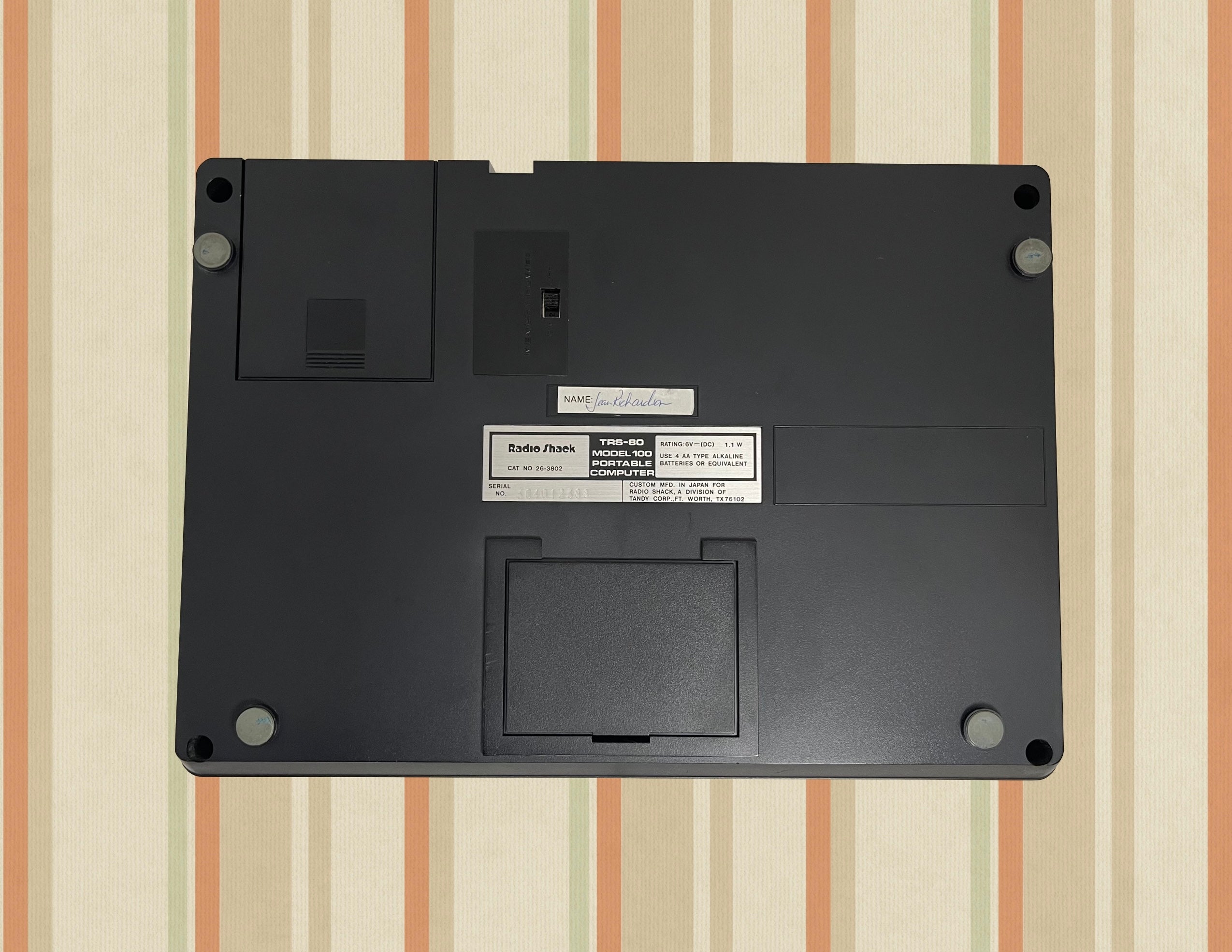
Early Portable Computers
by Amy VanderLaan
Osborne 1
The Osborne 1 is considered by many to be the first commercially successful portable computer. It was released in 1981 by Osborne Computer Corporation and cost $1795 US.
Though considered portable due to its carrying handle and resemblance to a briefcase, the Osborne 1 did not have internal batteries and had to be plugged in while in use.
The images to the right demonstrate what the Osborne 1 looked like with the keyboard folded/unfolded. This model was donated by Colin Hardman and can be viewed in our catalogue: 2024.42.1. Its colour is different than the one on display as its front panel was painted beige at some point. The Air Canada "fragile" stickers indicate that it was once treated as luggage on a plane.
These computers were primarily marketed as business devices and often compared directly to users of briefcases in advertisements. Take the Osborne 1 ads below for example. Phrases like "Unfold it, plug it in, and go to work like you've never worked before..." and "The Osborne is portable because your ideas don't always happen at the office" further emphasize how this computer was intended to be a business computer.
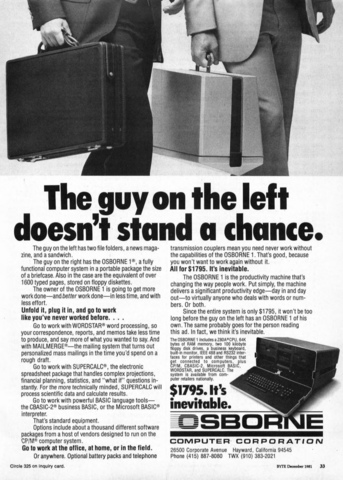
"Osborne 1 Advertisement.” BYTE Magazine, vol. 6, no. 12, Dec. 1981, p. 33. Retrieved from Internet Archive.
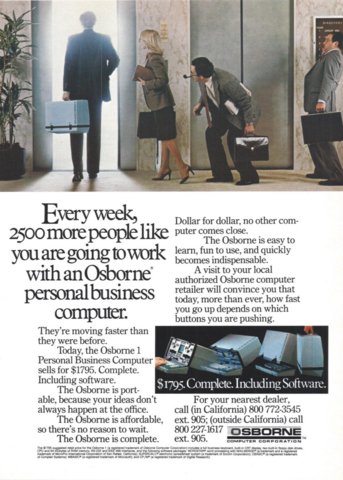
"Osborne 1 Advertisement." The Portable Companion, no. 5, Feb./Mar. 1983, p. 33. Retrieved from Internet Archive.
But luggables weren't the only style of portable computer that was being marketed around that time. In the early '80s there were several small handheld computers being made, aptly named notebook computers due to their size and shape. One of the earliest of these computers was the Epson HX-20 from 1982. This computer was about the size of an A4 notebook and weighed 1.6 kg.
TRS-80 Model 100
Though the Epson HX-20 came out first, the TRS-80 Model 100, released in 1983, is one of the first commercially successful notebook computers, with over 6 million units sold worldwide. This computer was especially popular among journalists and researchers as its lightweight and small size made it convenient to use outside of the office. In fact, it was about the same size as its manual!
The Model 100 was the last machine for which Bill Gates was one of the primary programmers at Microsoft. In an interview with the National Museum of American History, he said "It wasn't just taking your desktop machine and trying to shrink it down, because battery life would be a problem, and ease of use would be a problem. But just taking the things you want as you move around and making it pretty inexpensive." Unlike the Osborne 1, the Model 100 was battery powered and required four AA batteries.
The development of the laptop computer seems like a natural progression of these two devices, combining the battery power and small size of the handheld computers with the fold-out keyboard of the luggables.
Our Display
Our display features both of these portable computing styles. On the left is the Osborne 1, and on the right is the TRS-80 Model 100.
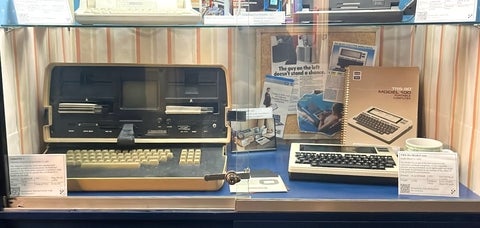
Bottom shelf of the Converging Design: Portable Productivity display
Osborne 1 Specs
| CPU | Zilog Z80 @ 4 MHz |
|---|---|
| Operating System | CP/M |
| Memory | 64 KB RAM |
| Display | 5" monochrome CRT display, 52 x 24 characters text |
| Keyboard | 69 keys, fold-down and detatchable |
| Storage | Dual 5.25" single-sided, single-density floppy drives |
| Weight | 11 kg |
This item was donated by Rick and Sandy Lugg.
View it in our catalogue: 2024.44.1
TRS-80 Model 100 Specs
| CPU | Intel 80C85 @ 2.4 MHz |
|---|---|
| Memory | 8, 16, 24, or 32 KB RAM |
| Display | 8 x 40 Liquid Crystal Display |
| Keyboard | 56 keys, 8 programmable function keys, 4 command keys, and 4 cursor control keys |
| Weight | 1.4 kg |
This item was donated by Jean Richardson.
View it in our catalogue: 2016.2.2
Next page!
Click the link below to navigate to the second page of the exhibit.
Related Artifacts
- Osborne 1 (2024.42.1)
- Osborne GM-12 Monitor (2024.42.2)
- Osborne 1 User's Reference Guide (2024.42.4)
- Osborne 1 User's Reference Guide (2024.42.5)
- WordStar with MailMerge (2024.42.6)
- WordStar Made Easy (2024.42.7)
- Osborne CP/M User Guide (2024.42.8)
- Osborne Double Density User's Manual (2024.42.9)
- Osborne Collection Floppy Disks A-N (2024.42.18)
- Osborne 1 Folder (2024.42.22)
- TRS-80 Model-100 Portable Computer Manual (2016.2.3)
Related Links
- Osborne 1 (2024.42.1)
- Osborne GM-12 Monitor (2024.42.2)
- Osborne 1 User's Reference Guide (2024.42.4)
- Osborne 1 User's Reference Guide (2024.42.5)
- WordStar with MailMerge (2024.42.6)
- WordStar Made Easy (2024.42.7)
- Osborne CP/M User Guide (2024.42.8)
- Osborne Double Density User's Manual (2024.42.9)
- Osborne Collection Floppy Disks A-N (2024.42.18)
- Osborne 1 Folder (2024.42.22)
- TRS-80 Model-100 Portable Computer Manual (2016.2.3)
- Osborne 1 (Wikipedia)
- Osborne 1 ad (BYTE Magazine)
- Osborne 1 ad (The Portable Companion)
- Epson HX-20 (Wikipedia)
- TRS-80 Model 100 (Wikipedia)
- Bill Gates interview for the National Museum of American History
About the Author
Amy studies Computational Mathematics at the University of Waterloo and is the Computer Museum’s Fall 2024 co-op student. In her free time, she enjoys painting, collaging, and other forms of visual art making.

